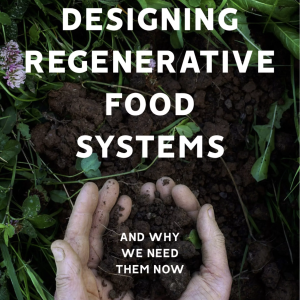
This book presents a toolkit of agroecological methods of farming, based on case studies including the author’s farm, Huxhams Cross Farm in Devon, England.
Publisher’s summary
A unique toolkit for designing regenerative food growing systems with tried and tested agroecological methods for transforming industrial food growing into a resilient agricultural revolution. This system grows good food from healthy soil in a low input, closed loop system.
The four challenges of climate change mitigation and adaptation, offsetting biodiversity loss and producing enough good food for a growing population are identified.
The author uses the case study of her Huxhams Cross Farm in Devon, England, to show how dead soil was transformed into a thriving fertile land, drawing on a toolkit of biodynamic, organic, agroforestry, regenerative, agroecological and permaculture methods.
The principles, methods and techniques of each approach are explained concisely, with illustrative case studies of successful examples and follow up resources such as film references.
The book concludes with the Huxhams Cross Farm case study with research evidence, reviewing the extent to which the four challenges are tackled successfully by the Toolkit; how the resilient farming revolution can be brought about by food choices, policy, tackling barriers such as land access, the psychology of scarcity and how to build farmer capacity for the resilient food growing transition.
Reference
O'Connell, M. (2022). Designing Regenerative Food Systems: And why we need them now. Hawthorn Press, Stroud.
Read more here. See also the TABLE explainer What is agroecology?












Post a new comment »